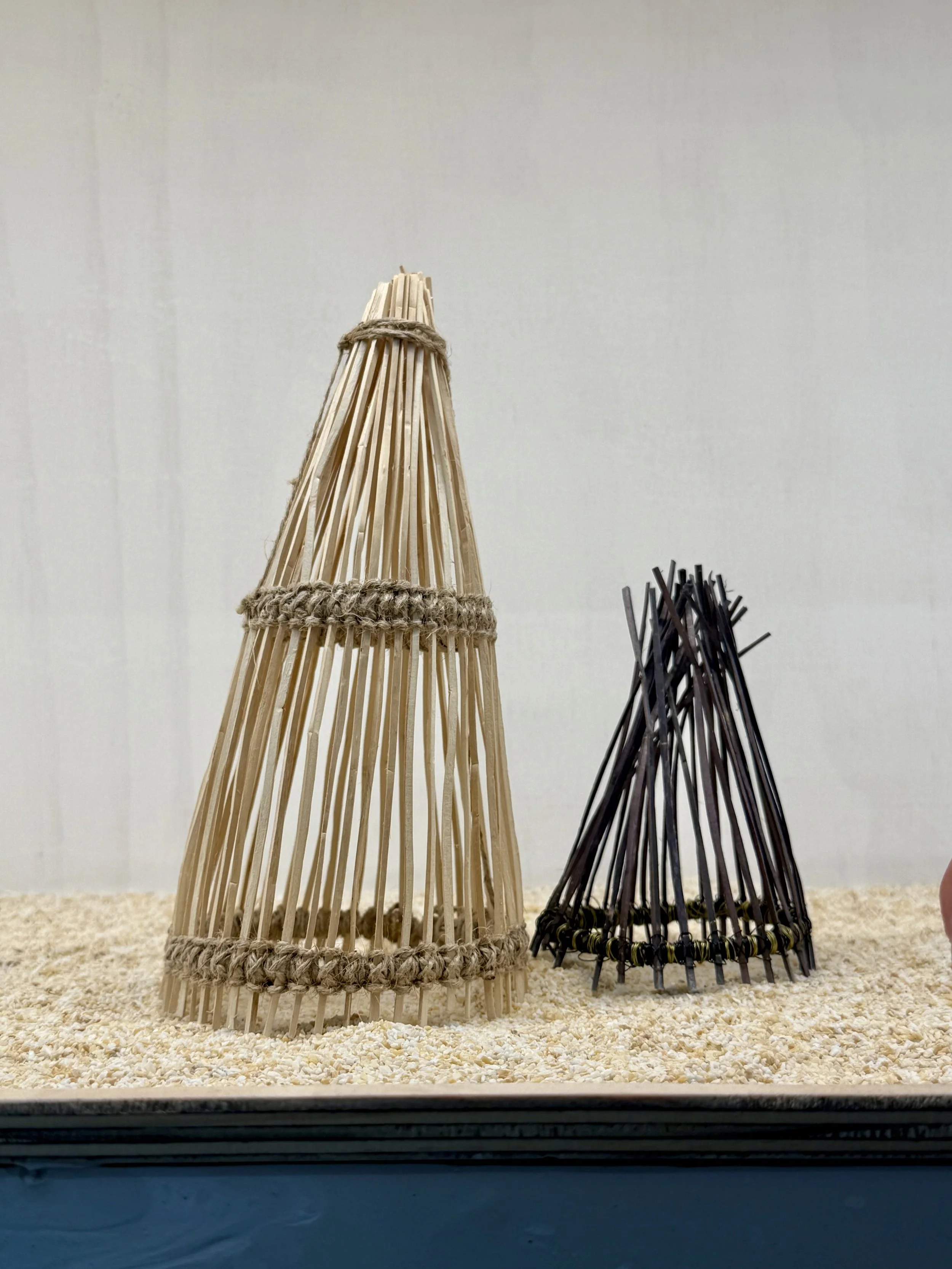Karaiyar
Anusha Vakeesan
Master of Architecture | University of Sydney
“Perhaps home is not a place but simply an irrevocable condition” - James Baldwin, Giovanni's Room.”
MATERIALS: sugarcane grass + dried cane + twine + brass
Artist Statement
"Home" is not a physical manifestation but a profound embodiment of belonging, identity, and the roots that define me.As a first generation immigrant, "home" is ingrained within me as memories and stories of my ancestors become a permanent lens through which I understand myself.As a child of the Sri Lankan Tamil fishing diaspora, the idea of "home" exists as an idealized longing. My ancestors were bound to the sea by the caste system, cast adrift in its tides, relegated to fishing as both sustenance and imposed fate.The shoreline of the sea becomes a threshold, a liminal space where "home" is both lost and found. The sea, both freedom and confinement, cradles my history in its currents, whispering ancestral echoes in every crashing wave.Ultimately, "home" is not a place I can return to, nor a singular place I can claim. It is the echo of my ancestors’ voices, my loved ones' touch, the salt of the sea sticking to my skin, and the enduring spirit that ties me to the water.
Synopsis
"Karaiyar" is the physical manifestation of a confessional conversation with my ancestors. It is the early formation of an antidote to centuries of ignorance, pain, and generational trauma perpetuated by oppressive forces such as the caste system. My ancestors belong to the Karaiyar (lit.: karai = ‘shore’; yar = ‘people’), a traditional fishing caste, and the Paraiyar (lit.: parai = ‘drum’; yar = ‘people’), historically considered an 'untouchable' caste. As a descendant of pariahs, societal isolation forced my family to shed our ancestral name leaving me to inherit my father’s first name. My name is Anusha Vakeesan, a name that marks me merely as my father’s daughter, severed from those who came before me.“Karaiyar” is a Sri Lankan fish trap, executed and materialised through intensive ethnographic studies and yarns. It is a symbolic representation of the ‘trap’ of the caste system which my ancestors sacrificed their identity to escape. Once, this very trap was woven by my paternal great grandfather, his pain interlaced within the coir, the length of the cane, the negative space between the weave. He positioned himself beside his creation, surrounded by the scent of dried fish, turmeric and palm mats, each element a silent keeper of his story. In the act of weaving, his hurt remained hidden, threaded into the very structure of survival.“Karaiyar” is an acknowledgment of the cyclical nature of healing, a search for joy in the saddest of places. I give thanks to my parents, grandparents and great grandparents who have mercilessly shouldered generational trauma, allowing me the privilege to live, heal and reclaim what was lost. As I weave this fish trap, my hands fumble, threads slip and the weave unravels an evidence of 70 years of inherited disconnection. And yet, I weave with humility, joy and pride, each strand of brass wire, twine and tin cane sticks interlaced with resistance against the caste system. Through “Karaiyar” the immortalisation of ancestors and their complex stories is promised, a testament to survival, defiance and remembrance.

